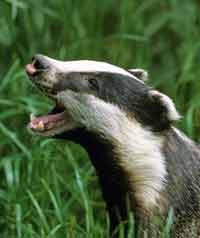RW 2010: Badger cull would cut TB by a third, says FUW

Badger culling could cut TB in cattle by more than a third, according to a scientific paper produced by the Farmers Union of Wales.
Using computer modelling the union showed herd incidences could be reduced by 30% in a five-year cull and by a further 32% in the three-and-a half year period after culling had ceased.
FUW policy director Nick Fenwick said the findings threw into doubt Welsh Assembly Government predictions of just a 9% reduction in TB in its proposed pilot cull in the Pembrokeshire.
The 9% figure was used by the Welsh Assembly Government in its submission to the Court of Appeal challenged by the Badger Trust.
Two of the three appeal court judges questioned whether 9% was a big enough benefit to warrant a cull of badgers, said Dr Fenwick. “But it is difficult to see why they chose to use such a low figure. It looks like a gross underestimate,” Dr Fenwick told Farmers Weekly.
He said he believed the assembly government prediction had failed to take account of the specific nature of the geographical boundaries surrounding the proposed cull area in North Pembrokeshire.
“Our computer modelling program factored in the river Teifi, the sea to the north and the Preseli mountains to the south.
“These create a barrier that cuts the effects of badger perturbation which reduced the benefit of culling in the Randomised Badger Culling Trial in England.
“If boundaries are put into the modelling it can be demonstrated that the TB herd incidence will decline by 30% over a five year culling period,” said Dr Fenwick.
As well as the geography of the site the legislation set out in the Wales TB eradication order 2009 would have better protected the trial from acts of disruption, said Dr Fenwick.
Results from the randomised badger culling trial were affected because lax security allowed the theft or damage of 1000 traps.
